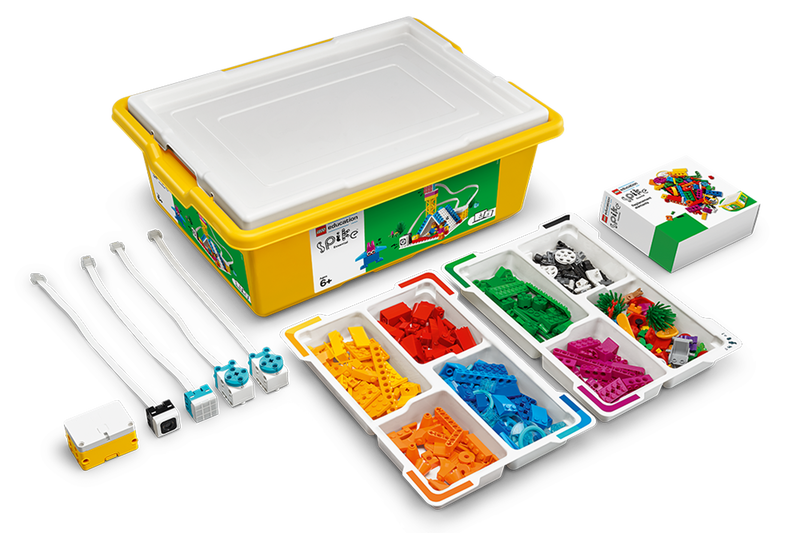
Revolutionizing Education by Introducing databot™ – A STEM Superhero
Transforming Education with the Introduction of databot™ – A STEM Superhero
Many schools want to make science exciting for students and teachers. But when it comes to teaching STEAM (Science, Technology, Engineering, Arts, and Mathematics), it can be challenging. Doing hands-on projects in class can be expensive because you need special tools and materials. Still, we must recognize how important STEAM is in education.
Transform Your STEAM Programs Today with databot™
The incredible versatility of databot™ is evident as it finds applications across various departments and age groups, spanning from elementary science to advanced high school computer science. The databot™ 2.0 chip is like a supercharged STEM superhero! It’s tiny, weighing just 1.2 oz, and stands at a sleek ¾” high. This wireless wonder is all set to unveil the magic of data instantly. Packed with 16 different science sensors, it acts as an intelligent multitasker that can be used with the user-friendly Vizeey™ app.
Data Science with databot™:
Data science involves analyzing and interpreting data to extract meaningful insights. Children should learn Data Science to develop critical thinking skills and understand how data-driven decisions shape our world. Using databot™, students can employ live sensor data to explore, observe, and comprehend real-world scenarios. It’s akin to having a window into the actual world, allowing them to gather, monitor, and analyze events unfolding in real-time.
Example:
Creating a photovoltaics garden at school with databot™ chips buried in the soil allows students to collect real-time data on plant growth. This enables them to learn about the growth patterns of various plants throughout different seasons without needing to physically visit the garden, bringing a hands-on and technology-infused approach to understanding plant development.
Coding AI and Machine Learning with databot™:
Coding, Artificial Intelligence, and Machine Learning are becoming integral to various technologies. databot™ offers an exceptional technology platform to delve into these subjects, providing multiple coding environments, physical computing features, real-time sensor integrations, and more for an immersive learning experience.
Example:
MicroBlock is like a fun, easy-to-use coding language for making things move in the real world, inspired by Scratch. Unlike some other coding tools that take a long time to start, MicroBlock is super fast! With just a click, your code runs automatically. It’s great for educators because there’s no waiting around, making it easier to keep students excited. You can even try out commands and see sensor readings in real-time!
Science with databot™:
The realm of science with databot™ opens up thrilling opportunities to explore Physics, Chemistry, Earth Science, and Biology. Dive into the interdisciplinary field of Environmental Science, gaining valuable insights through data on climate change. It’s a journey that helps us understand the personal impact we have on our remarkable planet every minute.
Example:
Let’s embark on an exploration of indoor air quality with databot™! Using its sensors, databot™ allows us to “see” indicators like humidity, volatile organic compounds (VOCs), and CO2 levels. Join in to assess if your local environment is safe and healthy. To conduct this experiment, you’ll need (an IOS or Android smart device with Bluetooth Low Energy (BLE) to connect to databot™, databot™ + Phypox App installed on your IOS or Android device, an airtight container to hold databot™ and materials for testing, white vinegar & baking soda and 2 –glass containers of 250 ml).
Applied Math with databot™:
With databot™, math becomes exciting and authentic! You can use actual data, solve real problems, and do genuine math calculations. It’s not just about numbers; it’s about solving practical issues. Plus, databot™ works together with programs like Desmos and Excel, making math more colorful and exciting. This way of doing math isn’t boring; it’s like discovering a new side. It can change how you feel about math, boost your confidence, and make the math class the most incredible place to be!
Example:
In this applied math activity, students explore concepts like Cartesian Coordinates, 3D coordinates (x, y, and z axes), positive and negative numbers, and acceleration. Students apply addition, subtraction, and division, work with decimal places, calculate average percentages, and engage in data collection, visualization, and analysis.
In conclusion, databot™ emerges as a revolutionary tool transforming STEM and STEAM education, addressing the challenges of making science and technology exciting and accessible.








Recent Comments